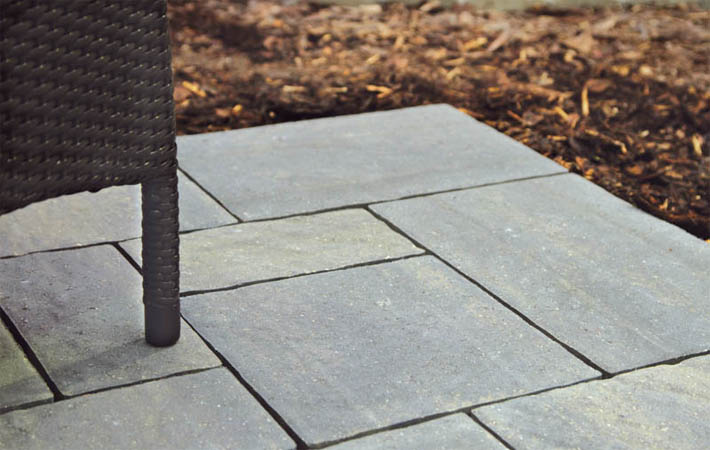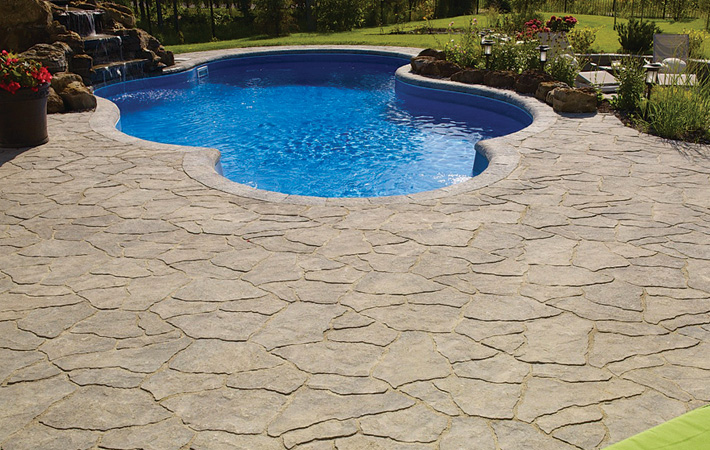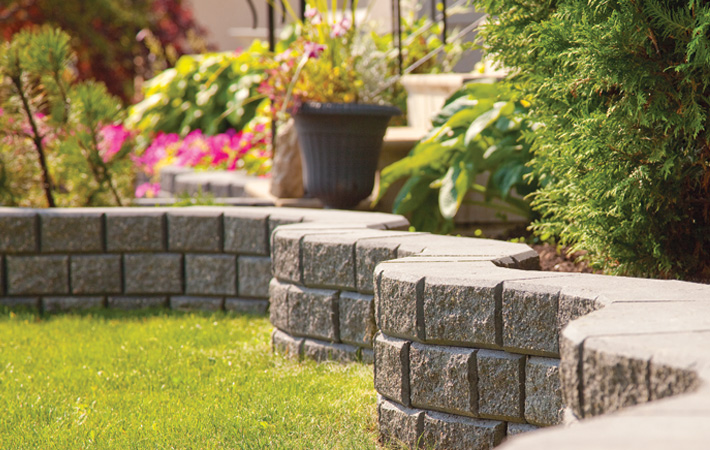Materials: Patio Stones and Retaining Wall Blocks
Landscape features can be built with a wide range of materials, both natural and manufactured. For durability and ease of maintenance, we work primarily with concrete pavers and retaining wall blocks.
Concrete Pavers
Most modern landscaping is done with concrete pavers. Concrete pavers are bricks made from concrete. They are strong, adaptable, very well-suited to Winnipeg's climate, repairable and very good value for the money.
Broadway 65mm Pavers
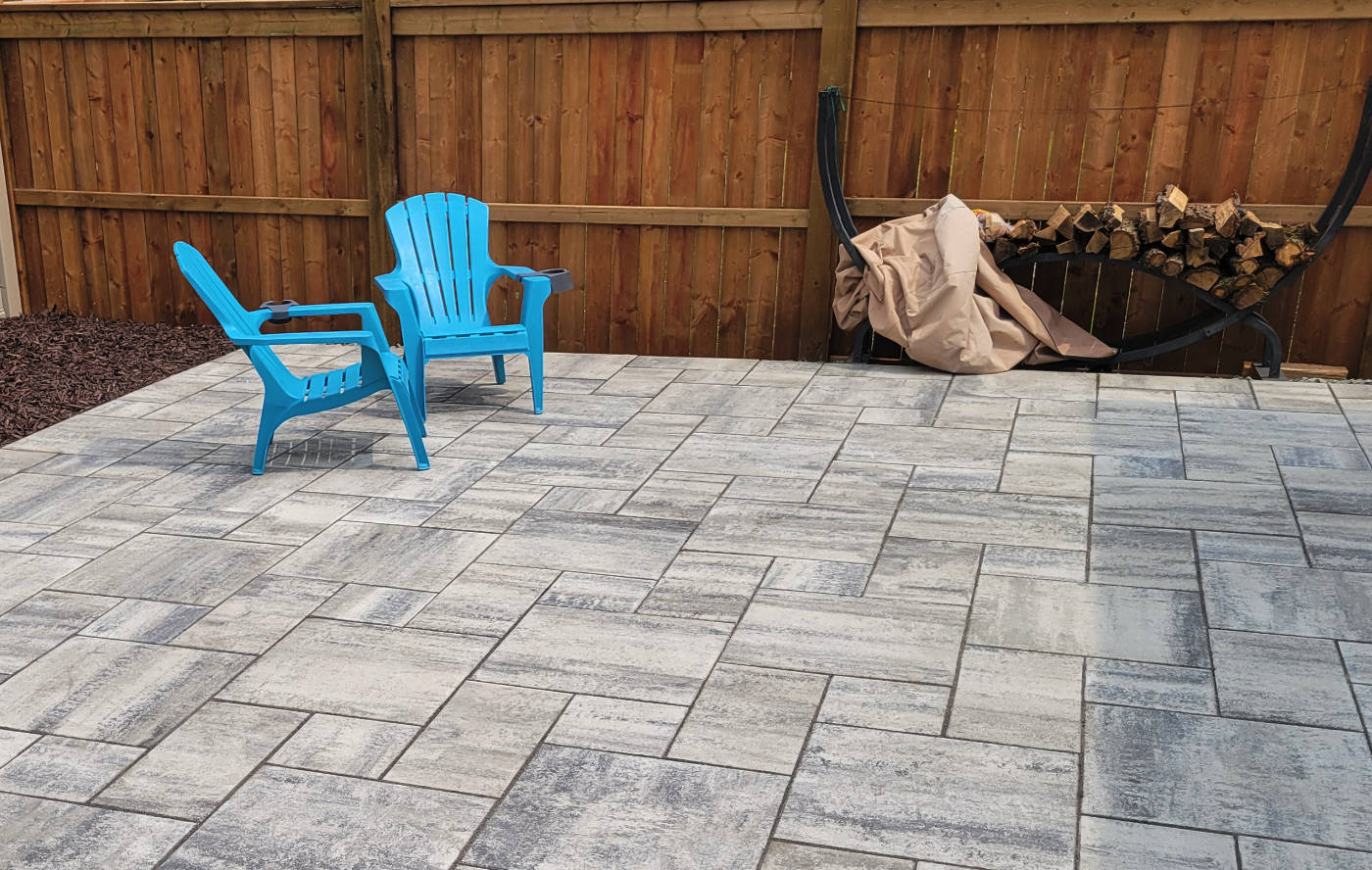
A large profile paver with a sleek and contemporary design. Broadway 65mm makes for beautiful pathways and patios. Four sizes and seven colours available. Designed for residential projects, with mainly pedestrian traffic. In the last couple of years, this has become one of the most popular styles of pavers.
Roman Pavers
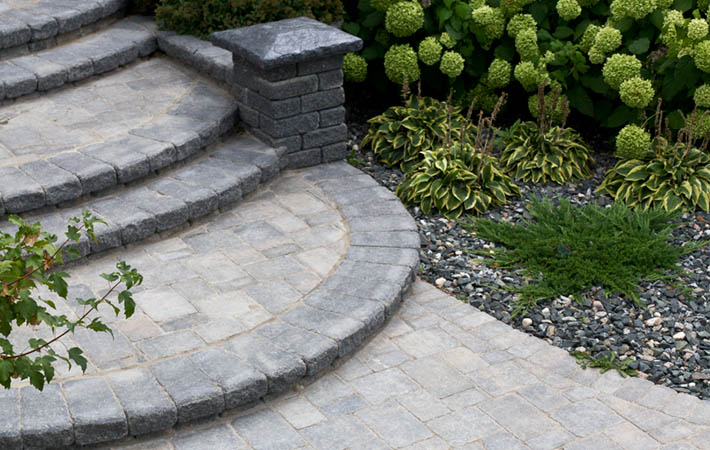
Tumbled pavers, old world style, enduring look of cobblestone. Tumbled for an old world appearance, roman pavers add character and beauty to any outdoor space.
Holland Pavers

This classic and economical 4" by 8" brick is available in a wide range of color blends. It produces clean lines for a more structured look.
If you don't see it here, we still might have access to it. Please check out our supplier, Barkman Concrete , for the full range of what we have available.
Retaining Wall Stones
Roman Stack

Identical in form to the stack stone. Tumbled to give it a weathered look, complimenting the roman pavers.
Belvedere
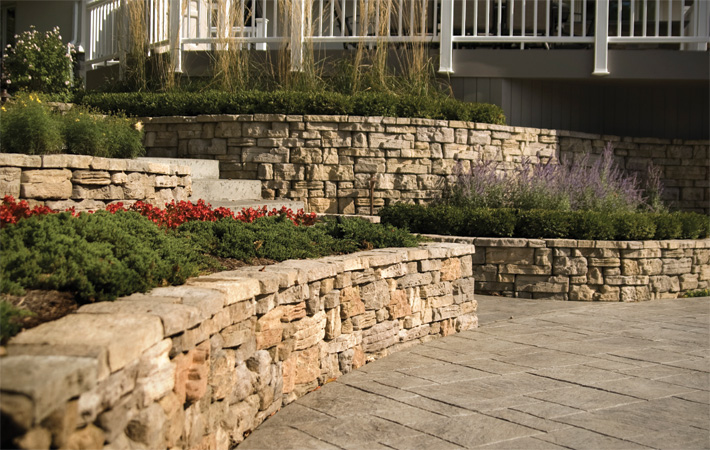
The look of a dry-stacked natural stone wall. The simplified installation of a manufactured block. Assorted block sizes and a heavily textured face give the appearance of natural stone.
Quarry Stone
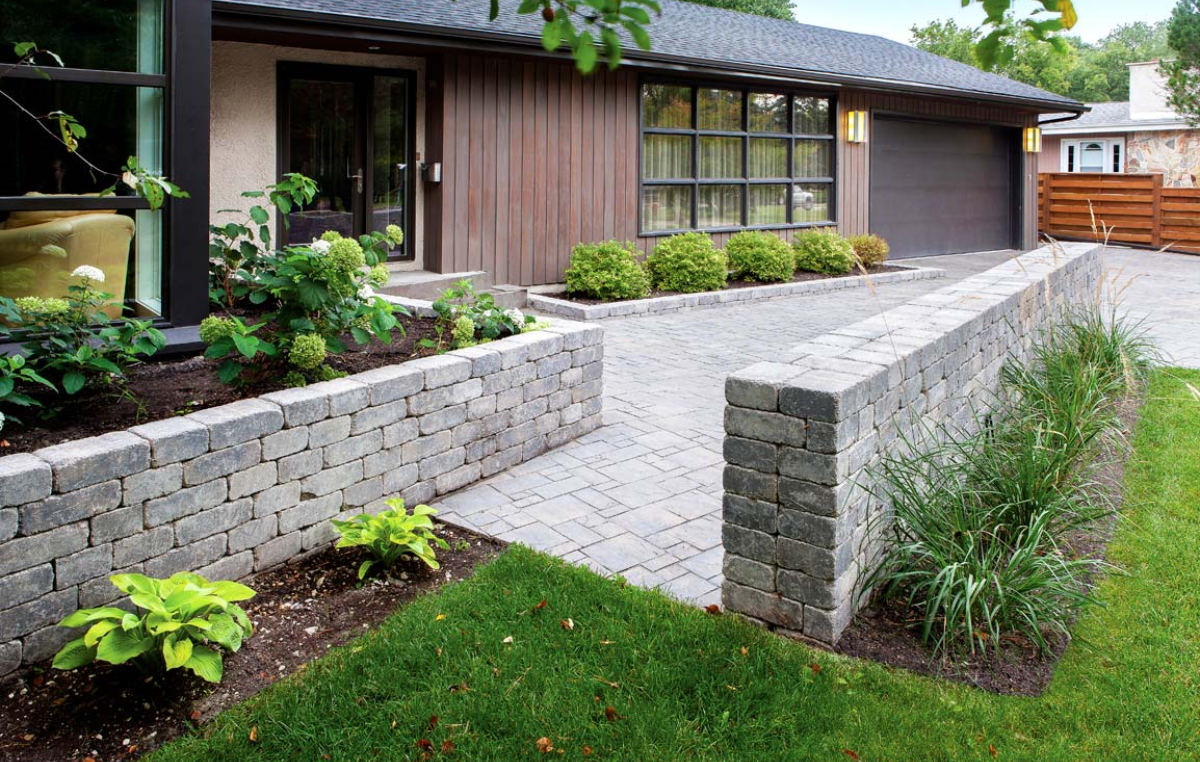
The well-worn appeal of Quarry Stone delivers the appearance of a classic wall or structural accent that's been a part of the landscape forever. Understated and functional, Quarry Stone comes in a variety of colors that can be interchanged to create unique accents in your project.
Architextures
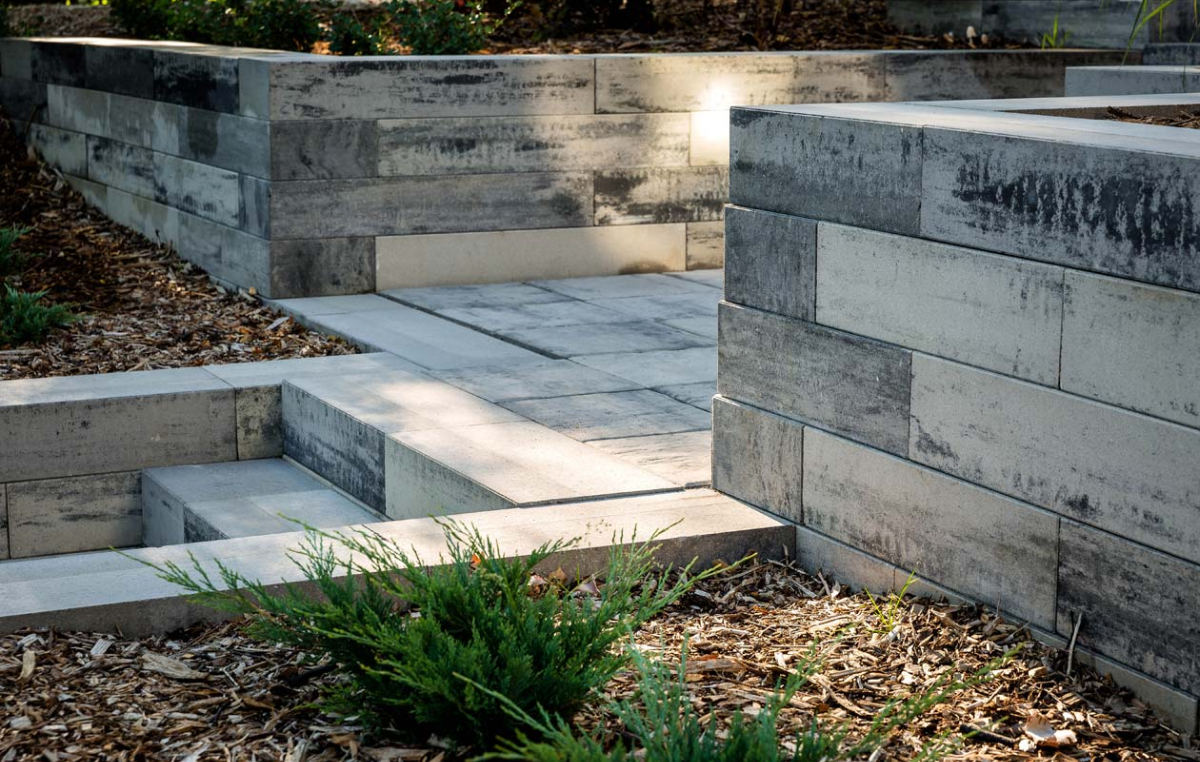
Large format, contemporary retaining wall. Engineered to reach heights of up to 26 feet. Crisp edges and a clean linear appearance, this versatile product effortlessly complements both modern and traditional designs.
Bridgewood Wall
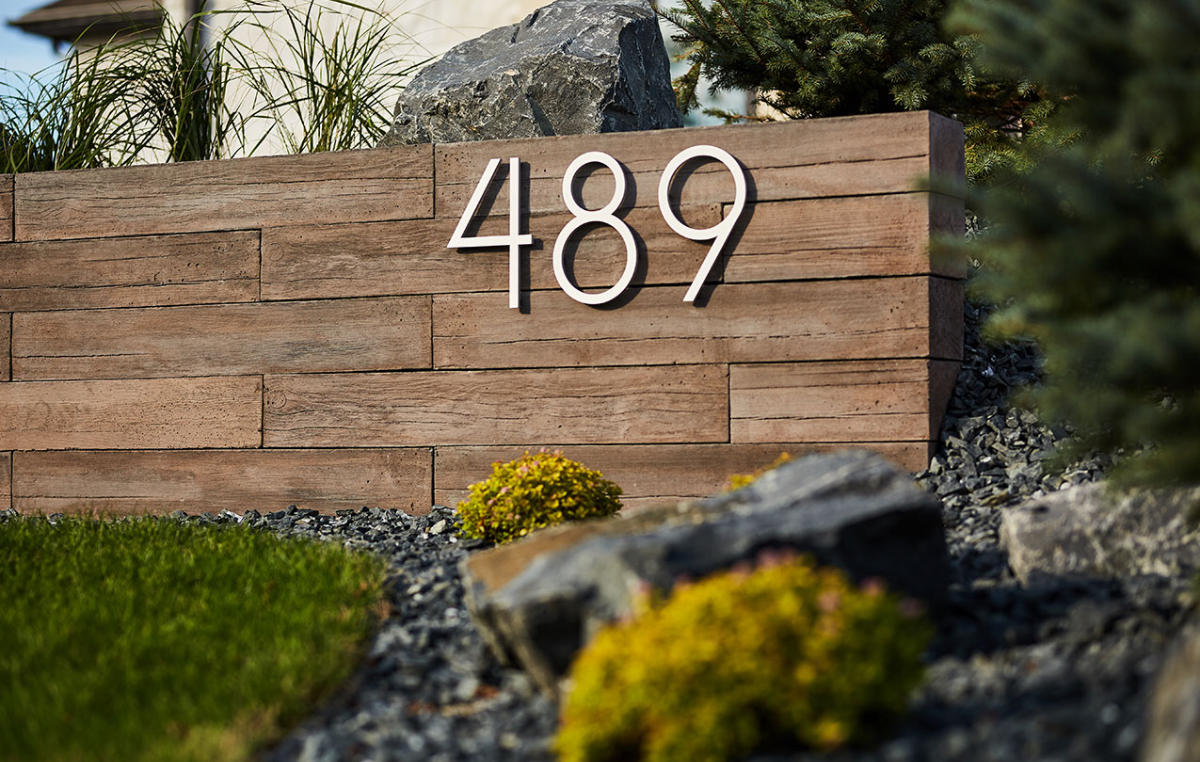
The look and feel of wood, but it's concrete. Each piece features a realistic wood texture on each face taken from actual pieces of a wood plank. Unlike traditional wood surfaces, Bridgewood Wall will never rot or warp. Perfect for freestanding walls, small planter boxes and garden walls. Adds the warmth of natural wood to your landscape.
If you don't see the retaining wall stones you want here, please check out our supplier, Barkman Concrete , for the full range of what we have available.
Natural Stone
The varied color and texture of natural stone can look incredible.
Most natural stone options work great on patios but not so well for driveways. Natural stone often won't stand up to the weight of vehicles.
Limestone
Local Manitoba limestone is a unique product we have right here in the province. For the same reason wine connoisseurs love to taste the distinct qualities of the environment grapes were grown in (the "terrior" of the grape), Manitoba stone on a Manitoba patio is a very stylish choice. Limestone has been used in some of the most iconic buildings and locations in Winnipeg.
- It's an affordable option for Winnipeggers, comparable in price to concrete pavers.
- Very light-colored stone, loaded with fossils from marine plants and animals from the ancient Lake Agassiz.
- Proper base preparation is very important with limestone. It is a relatively soft stone that can crack if it isn't installed with care.
Slate flagstone
Though certainly not the cheapest option, Slate can be absolutely striking.
- Many color options (ex. red, brown, blue, grey, black).
- The surface texture makes for great visual interest – it can look truly amazing. But that same textured quality does make installation more complex.
- It is more expensive than other materials.
Materials Glossary
What are pavers?
Pavers is a general term that covers clay bricks, concrete blocks, or natural stones like cobblestones. If you are looking at a surface that looks like bricks or stones, those are pavers of some kind.
What are concrete pavers?
Concrete pavers are bricks made from concrete. Almost all modern landscaping is done with concrete pavers.
What are bricks?
Although many pavers are called "bricks" in general conversation, usually when pros talk about bricks they mean blocks made from clay. The clay is hardened in a kiln or sun-dried. Bricks are an ancient building material.
What is concrete?
Concrete is a mixture of sand, gravel and cement. A "glue" substance called cement holds the sand and gravel together. This kind of cement hardens when you add water to it. When you mix cement with water, sand, and gravel, it forms concrete.
What is cement?
Concrete is often called "cement" but technically cement is the "glue" ingredient in concrete.
What are natural stones?
Unlike bricks and concrete pavers, natural stones do not begin as paste or soft clay before they are hardened in the desired shapes. Natural stones are the opposite. They come right out of the ground as stone, with an irregular shape. They are hardened by nature over millions of years. Then they are cut into shapes that are useful. Cobblestones are an example.

